
Simulated Example Datasets From Baudry et al. (2010)
Baudry_etal_2010_JCGS_examples.RdSimulated datasets used in Baudry et al. (2010) to illustrate the proposed mixture components combining method for clustering.
Please see the cited article for a detailed presentation of these datasets. The data frame with name exN.M is presented in Section N.M in the paper.
Test1D (not in the article) has been simulated from a Gaussian mixture distribution in R.
ex4.1 and ex4.2 have been simulated from a Gaussian mixture distribution in R^2.
ex4.3 has been simulated from a mixture of a uniform distribution on a square and a spherical Gaussian distribution in R^2.
ex4.4.1 has been simulated from a Gaussian mixture model in R^2
ex4.4.2 has been simulated from a mixture of two uniform distributions in R^3.
Usage
data(Baudry_etal_2010_JCGS_examples)Format
ex4.1 is a data frame with 600 observations on 2 real variables.
ex4.2 is a data frame with 600 observations on 2 real variables.
ex4.3 is a data frame with 200 observations on 2 real variables.
ex4.4.1 is a data frame with 800 observations on 2 real variables.
ex4.4.2 is a data frame with 300 observations on 3 real variables.
Test1D is a data frame with 200 observations on 1 real variable.
References
J.-P. Baudry, A. E. Raftery, G. Celeux, K. Lo and R. Gottardo (2010). Combining mixture components for clustering. Journal of Computational and Graphical Statistics, 19(2):332-353.
Examples
# \donttest{
data(Baudry_etal_2010_JCGS_examples)
output <- clustCombi(data = ex4.4.1)
output # is of class clustCombi
#> 'clustCombi' object:
#> Mclust model: (VVI,4)
#> Available object components: classification combiM combiz MclustOutput
#> Combining matrix (K+1 classes -> K classes): <object_name>$combiM[[K]]
#> Classification for K classes: <object_name>$classification[[K]]
# plots the hierarchy of combined solutions, then some "entropy plots" which
# may help one to select the number of classes
plot(output)
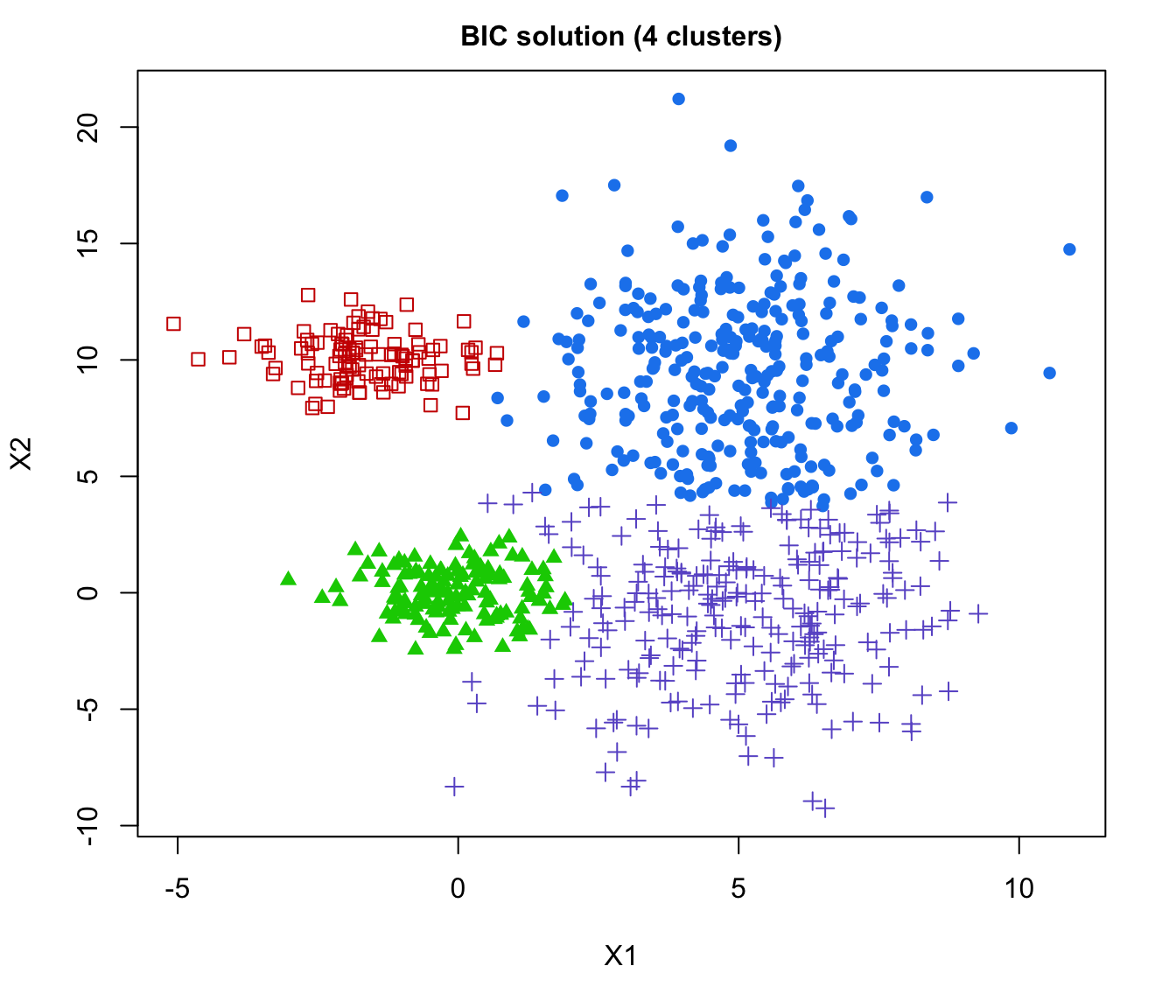
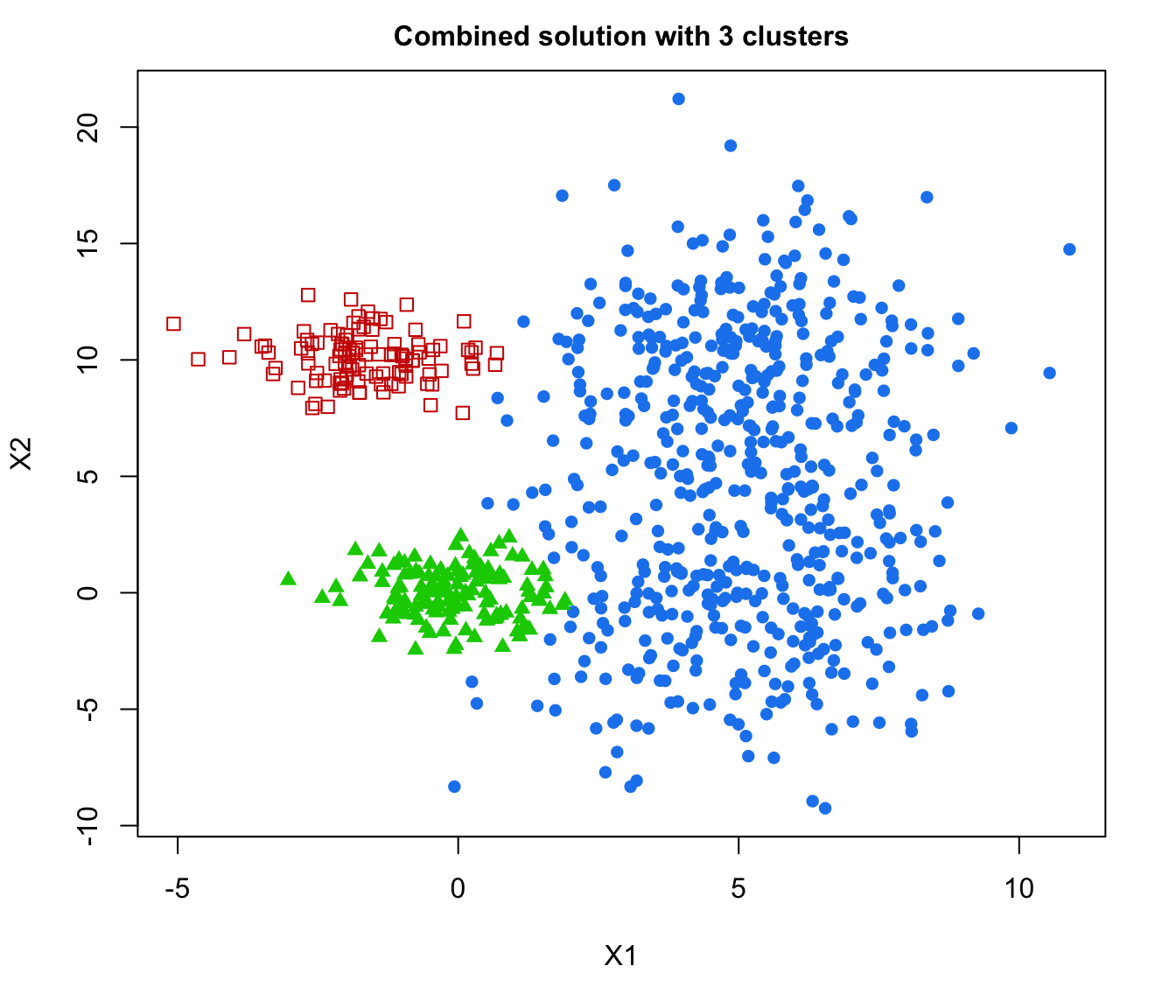
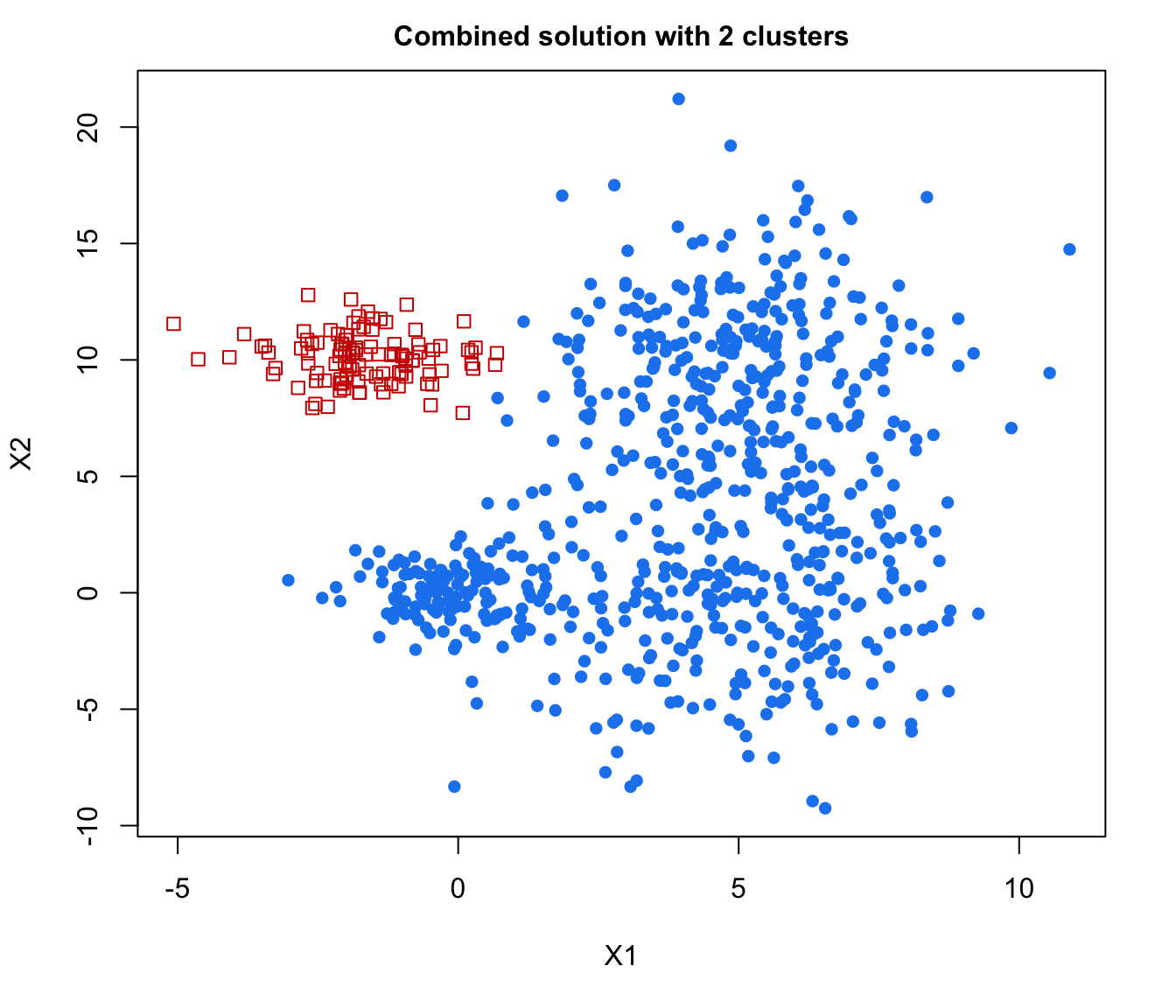
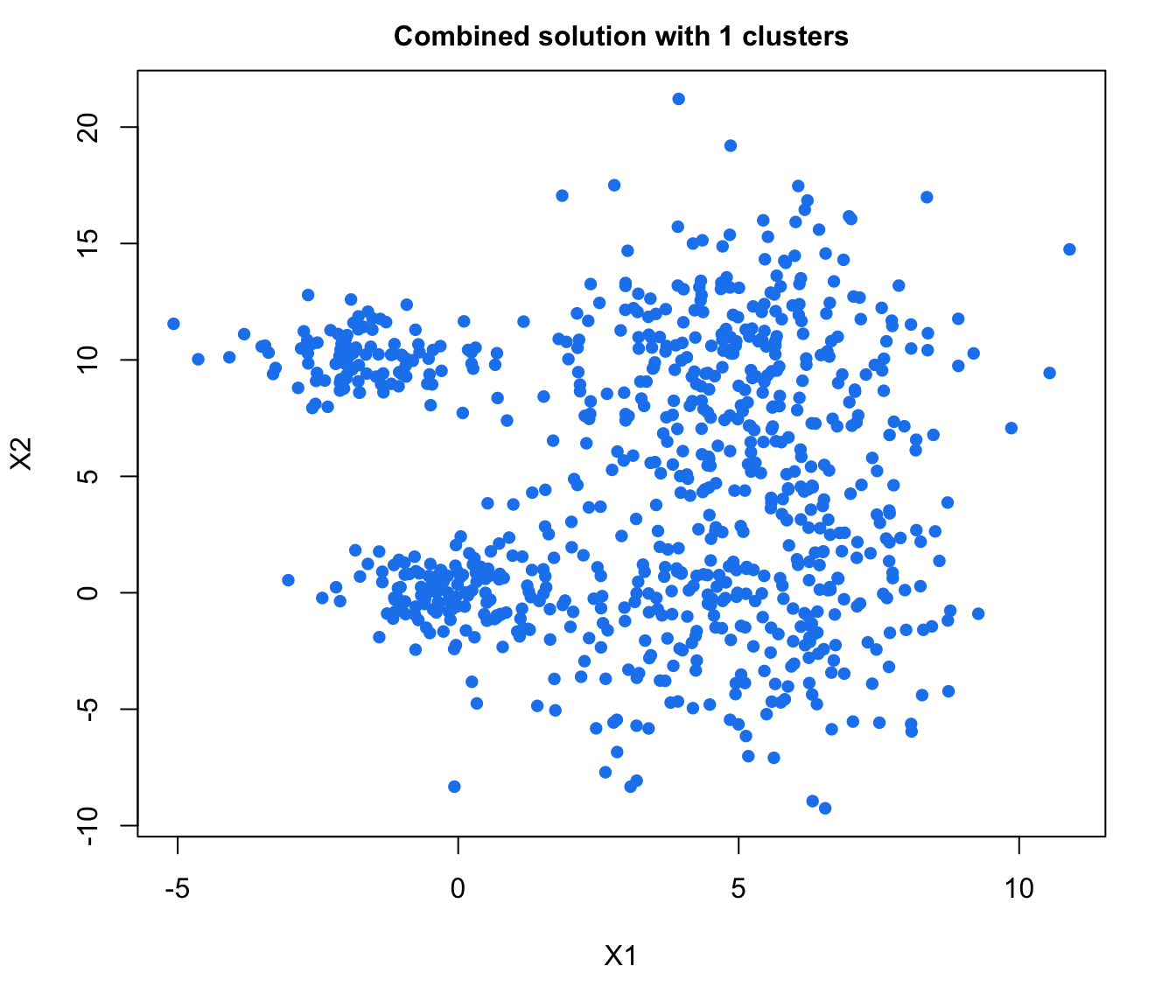
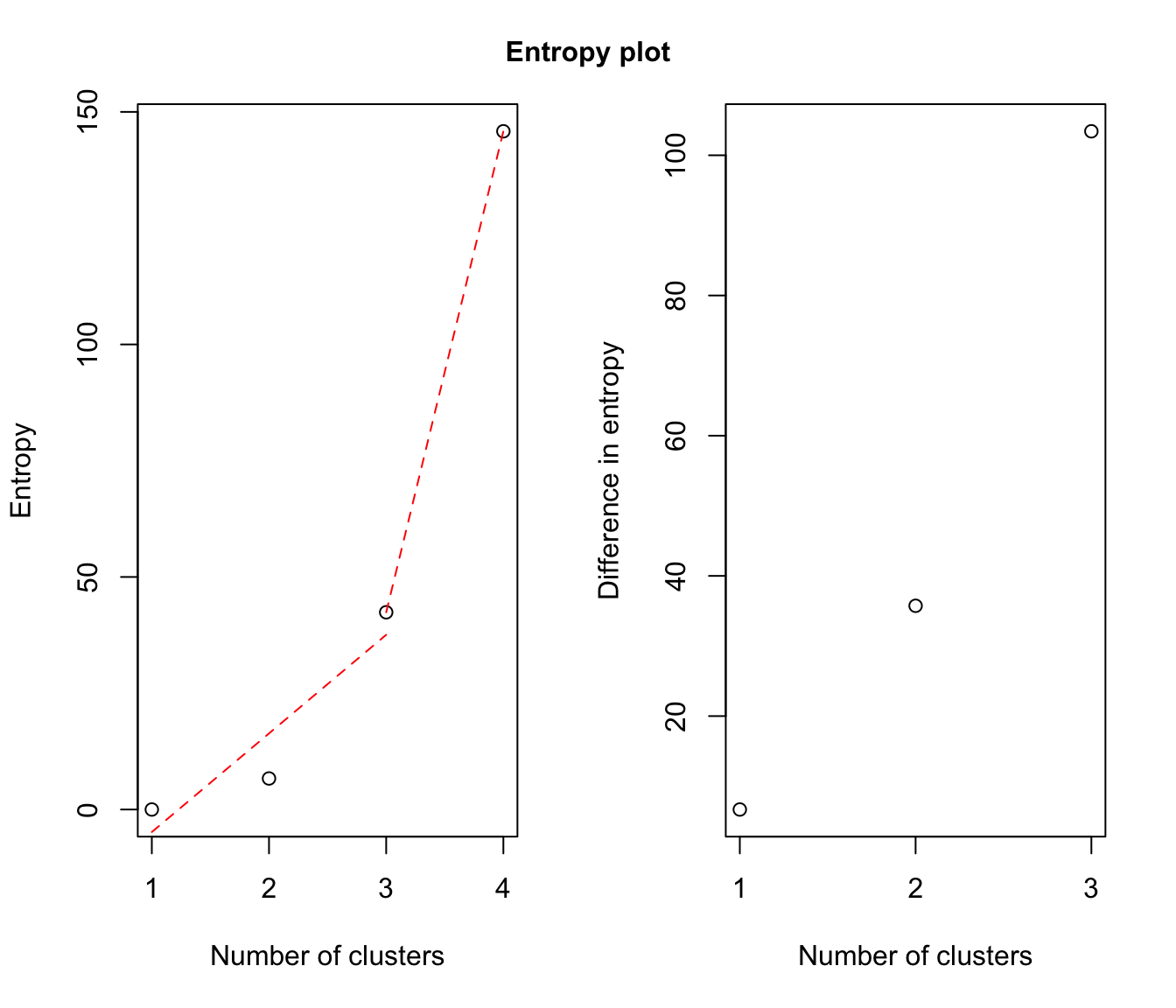
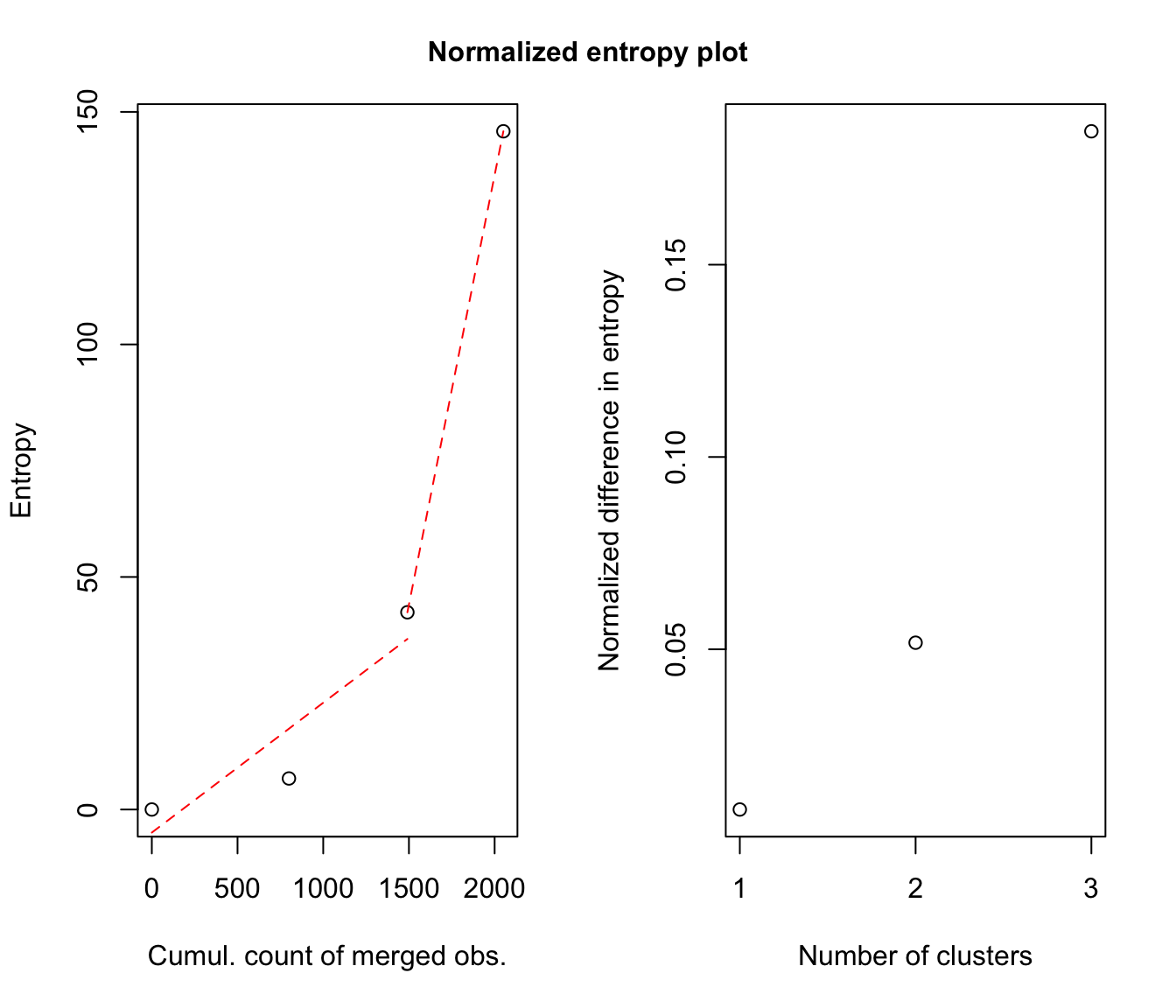
 # }
# }